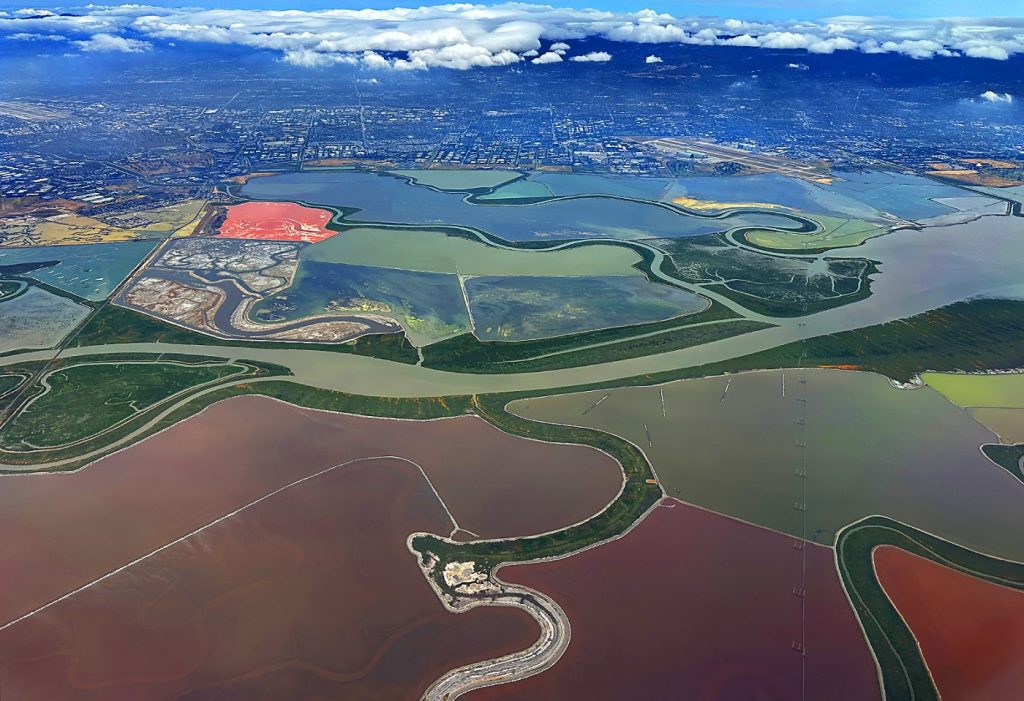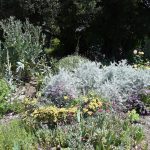The ponds, noted for their vivid colors ranging from magenta to blue green, are especially visible from the air. The colors come from the brine shrimp and microorganisms that thrive in the different salinity levels in the ponds.
Salt production at the site began when the Ohlone were the only people in the area. After the large influx of non-native people to the area during the gold rush industrial salt production began.
At first production was predominantly small family operations but over time these were replaced by companies such as the Oliver Salt Co. in Mount Eden and Leslie Salt in Newark. Eventually, Cargill bought out the companies to become the dominant producer in the area.
Seawater from the surrounding bay is pumped into a series of shallow ponds, becoming increasingly salinized as evaporation increases the salt-to-water ratio. After a five-year journey, the salt is finally harvested.
Each pond along the way has a different salt level, creating a variety of habitats that each support different micro-organisms that are responsible for the colors, from the Dunaliella algae that turn the water a vibrant shade of green early in the process all the way to the creatures that thrive in the saltiest ponds, like the brine shrimp that produce bright oranges and yellows and the Halobacteria that create a deep magenta.
Predominantly using solar and wind power, Cargill’s more than 12,000 acres of salt ponds are capable of crystallizing 500,000 tons of sea salt each year.
Additionally, the salt ponds support more than 1 million waterbirds throughout the year, hosting more than 75 species, and peaking at 200,000 birds in a single salt pond during the winter and spring migration season.


